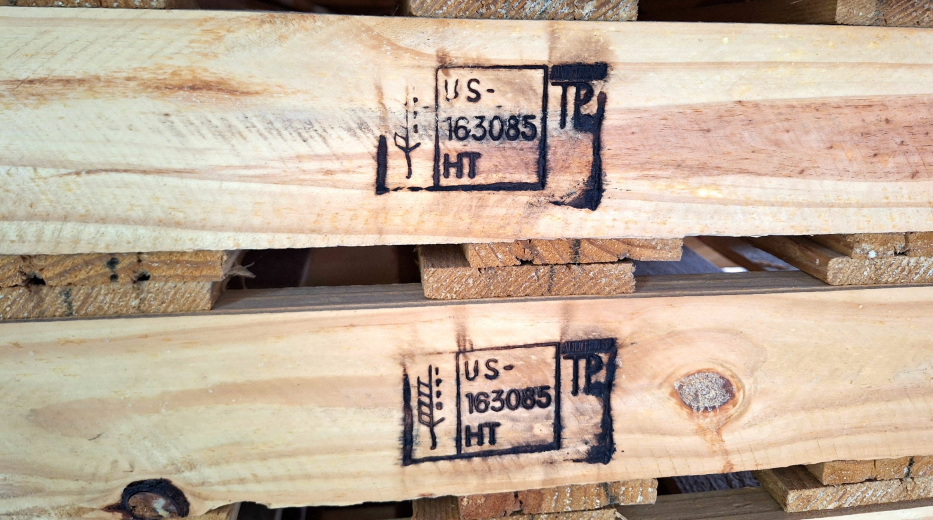ISPM 15 Compliance
Understanding ISPM 15: Compliance Requirements for HT Pallets
When it comes to international shipping, one of the most critical aspects for businesses to understand is the International Standards for Phytosanitary Measures No. 15, commonly referred to as ISPM 15. This standard, developed by the International Plant Protection Convention (IPPC), outlines the requirements for wood packaging materials, including pallets, to prevent the spread of pests and diseases across borders. Compliance with ISPM 15 is mandatory for all businesses involved in global trade, and one of the key methods for meeting this requirement is through the use of heat-treated (HT) pallets.
What is ISPM 15?
ISPM 15 is an international regulation that sets the standards for treating wood materials used in packaging to prevent the spread of harmful pests. The regulation was introduced in 2002 by the IPPC, a part of the Food and Agriculture Organization (FAO) of the United Nations. It is designed to minimize the risk of spreading invasive species that could threaten agriculture and ecosystems in the importing countries.
The regulation applies to all solid wood packaging materials, including pallets, crates, dunnage, and drums, used in international shipping. Materials that comply with ISPM 15 are marked with a specific stamp indicating that they have been treated according to the standards. This stamp typically includes the IPPC logo, a country code, a unique identifier for the treatment provider, and the treatment method (HT for heat treatment or MB for methyl bromide fumigation).
Why is Compliance with ISPM 15 Important?
Compliance with ISPM 15 is crucial for several reasons:
Preventing the Spread of Pests: The primary goal of ISPM 15 is to prevent the international spread of pests and diseases that can devastate local ecosystems and agriculture. For instance, pests like the Asian longhorn beetle or the emerald ash borer can be transported in untreated wood, causing significant damage to forests and crops in the importing country.
Avoiding Trade Disruptions: Non-compliance with ISPM 15 can lead to significant trade disruptions. If a shipment arrives at an international port without the proper ISPM 15 certification, it can be rejected, delayed, or even destroyed, leading to costly delays and potential loss of goods.
Legal and Financial Penalties: Businesses that fail to comply with ISPM 15 regulations may face legal penalties and fines. Ensuring that all wood packaging materials meet the standards is not just about avoiding these penalties; it’s also about maintaining the reputation and reliability of the business in the global market.
Heat Treatment Process for ISPM 15 Compliance
One of the most common and effective methods to meet ISPM 15 standards is through heat treatment. The heat treatment process involves heating the wood to a core temperature of at least 56°C (132.8°F) for a minimum of 30 minutes. This process eliminates any pests or larvae that may be present in the wood, rendering it safe for international transport.
The steps involved in the heat treatment process are:
Debarking: Before the heat treatment begins, the wood must be debarked. While not all bark needs to be removed, ISPM 15 specifies that a minimal amount of bark can remain.
Heating: The debarked wood is then placed in a kiln or other approved heating chamber where it is heated to the required temperature. This step ensures that the heat penetrates deep into the wood, reaching the core to effectively eliminate pests.
Certification and Marking: After the treatment is complete, the wood is inspected and, if it meets the standards, is stamped with the ISPM 15 mark. This stamp is crucial as it certifies that the wood has been properly treated and is safe for use in international shipping.
Alternatives to Heat Treatment
While heat treatment is the most widely used method for ISPM 15 compliance, there is an alternative method: methyl bromide fumigation. This process involves exposing the wood to methyl bromide gas to kill pests. However, due to environmental concerns and the phase-out of methyl bromide under the Montreal Protocol, heat treatment is increasingly preferred.
How to Ensure Compliance
For businesses involved in international trade, ensuring compliance with ISPM 15 is vital. Here are some steps to help ensure your wood packaging materials meet the required standards:
Work with Certified Providers: Always source your pallets and other wood packaging materials from suppliers that are certified to provide ISPM 15 compliant products. They should be able to provide documentation and the necessary stamps to prove compliance.
Regular Inspections: Regularly inspect your wood packaging materials to ensure they maintain their compliance, especially if they are reused. Over time, repairs or replacements may be needed, and any new wood added must also be treated and certified.
Stay Updated on Regulations: ISPM 15 standards and regulations can evolve. Stay informed about any changes to the requirements to ensure ongoing compliance and avoid potential trade issues.
Conclusion
Understanding and complying with ISPM 15 is essential for any business involved in international shipping. By using heat-treated pallets that meet these standards, you protect your shipments from pest infestations, avoid costly trade disruptions, and contribute to the preservation of global ecosystems. Ensuring your pallets are ISPM 15 compliant is not just a regulatory requirement—it’s a smart business practice that safeguards your operations and reputation in the global market.
This comprehensive understanding of ISPM 15 and the heat treatment process will equip your business with the knowledge needed to navigate the complexities of international trade with confidence.


